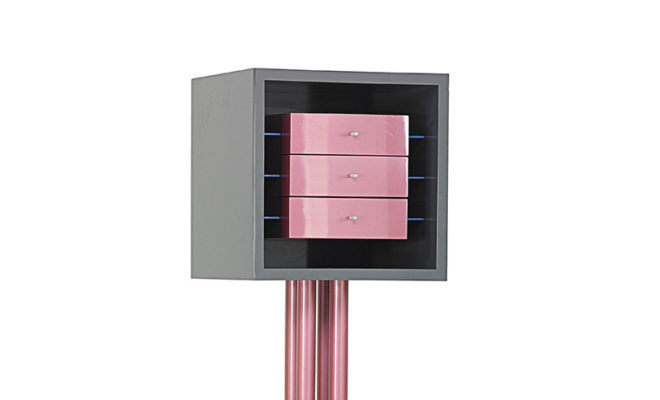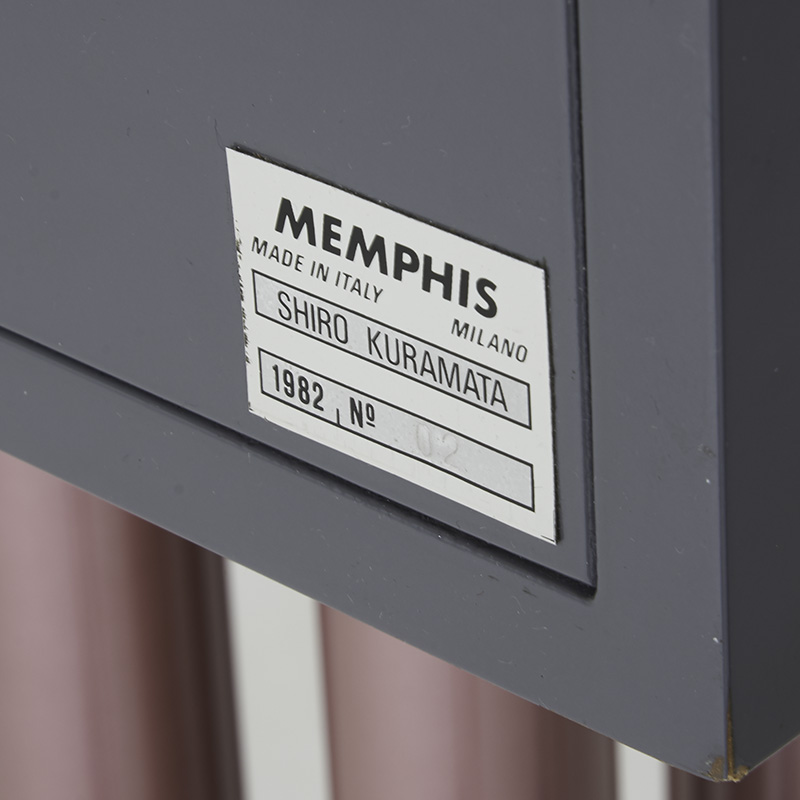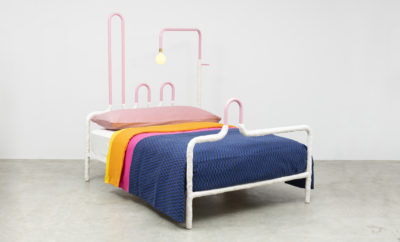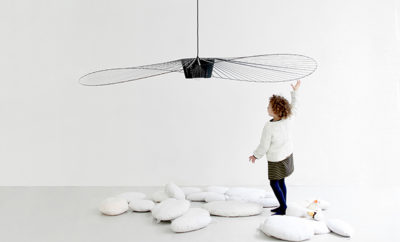 Nikko cabinet designed by Shiro Kuramata, 1982. COURTESY OF RAGO AUCTIONS.
Nikko cabinet designed by Shiro Kuramata, 1982. COURTESY OF RAGO AUCTIONS.
Design
Delving Deeper
Lot 1255 Rago’s Modern Design sale, September 23, 2018:
Nikko cabinet designed by Shiro Kuramata, 1982. With an estimate of $5,000–$7,000, the piece sold for $11,250. Some reasons for the high price:
JAPANESE IN MEMPHIS
Shiro Kuramata grew up under the uncertain circumstances of Japan of the 1930s and ‘40s, but this precarity gave Kuramata and his contemporaries the opportunity to envision what they wanted of Japanese modern design. After training in woodcraft at Tokyo Municipal Polytechnic High School, Kuramata enrolled at the Kuwasawa Design School, graduating in 1956 and moving on to design for department stores. Creatively, Kuramata’s influences form a constellation of eclectic forces: Isamu Kenmochi, his instructor at Kuwasawa, who taught an approach to ancient Japanese traditions through modern materials and vocabulary; American sculptor Donald Judd, whose minimalist work enthralled Kuramata; Gutai, a Japanese performance group that embraced decay as a revelatory process into the essence of an object; and Tomohiko Mihoya, owner of a glass company, who experimented with Kuramata to push the capabilities of glass in design, allowing Kuramata’s motifs of floatation and immateriality to take flight. In 1956 Kuramata encountered his first issue of Domus magazine, through which he discovered Italian design and its “jaunty Italian optimism,” as he described it, which was a stark contrast to the industrial, commercial demands of postwar Japanese design. In 1965 Kuramata established his own design firm, and in 1969 he embarked on a grand tour to Europe, during which he met Ettore Sottsass, founder of the Memphis group; he joined Memphis in 1981, its inaugural year.

Nikko cabinet designed by Shiro Kuramata, 1982. COURTESY OF RAGO AUCTIONS.
ENCHANTMENT AS FUNCTION
The Nikko cabinet first appeared at the Memphis Vol. 3 exhibition, held in Milan in 1982, and later that year at another exhibition in Tokyo. Much of Kuramata’s work of the period echoes the Memphis aesthetic, but meditative study reveals a refinement, a sidestepping of the outlandishness of many of the group’s designers. Jad Attal, specialist in twentiethand twenty-first-century design at Rago, describes a synthesized maturity in Kuramata’s work: technological but unapologetically simple, playful but resoundingly beautiful. The most enduring characteristic of his designs is that of objects appearing to float, an effect achieved through top-focused compositions, use of shadow, or, most predominantly, clear or translucent materials, particularly acrylic. In the Nikko, use of shadow in combination with thin steel supports creates the illusion that the drawers defy gravity, an illusion enforced by their high, tabernacle-like stature within the composition. While one might question what to store in these tiny drawers, Attal cautions that to focus on function is to miss the larger point of Kuramata’s work. An exploration of materials and architectural form is inevitable, but the profound awe is in the exaltation of ideas and aesthetics. “Enchantment,” as Kuramata theorized, “should also be considered as function.”

Nikko cabinet designed by Shiro Kuramata, 1982. COURTESY OF RAGO AUCTIONS.
FRIENDS IN HIGH PLACES
In the larger design world, Memphis has unmistakably had a moment in the past few years, and Kuramata materializes often at auction. Rago’s Nikko cabinet, one of an edition of eleven, came from a New York–based private collection. Attal considers it “advanced Memphis,” referring to small production or limited edition designs requiring a connoisseurial eye, and says such designs attract a passionate, studious market “looking for his essence.” Kuramata’s arguably most famous piece, the Miss Blanche chair—of conjoined acrylic sheets hosting paper roses within their panes—sold in 2015 for more than $400,000. Such a sale had a “top of the pyramid” effect, according to Attal, in that the designer’s earlier and lesser-known pieces are now reassessed for renewed value. The Nikko itself has come up for auction four times in the past ten years, frequently leaving the auction block unsold. At Rago’s sale, a synergy of realistic pricing, transparency in authenticity, and knowledgeable buyers sent this Nikko to a new home. Of the buyer, Attal speculates that the sale “tells me this is a resourceful person who knows what they’re doing and is absolutely confident.”












